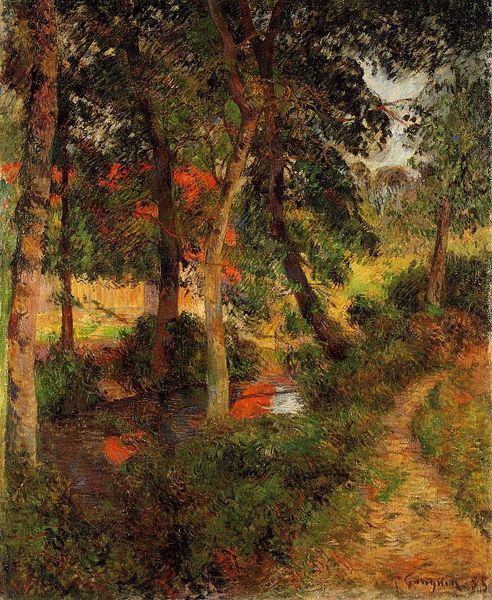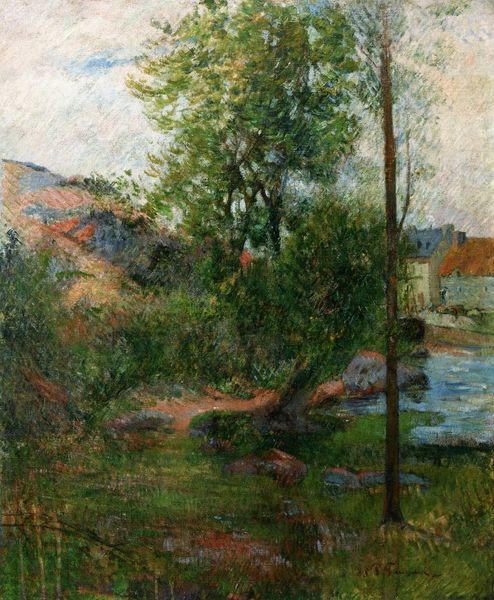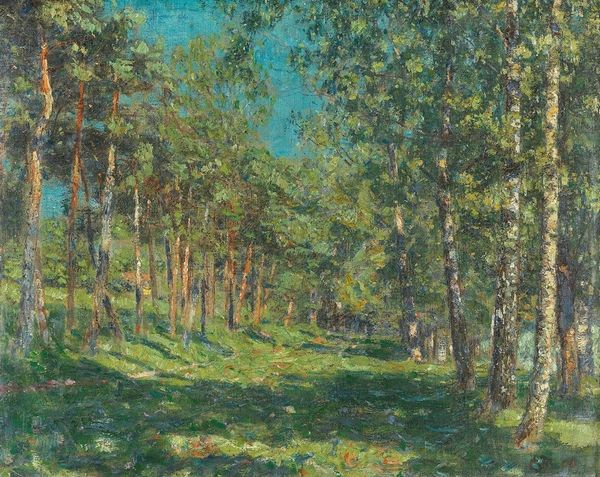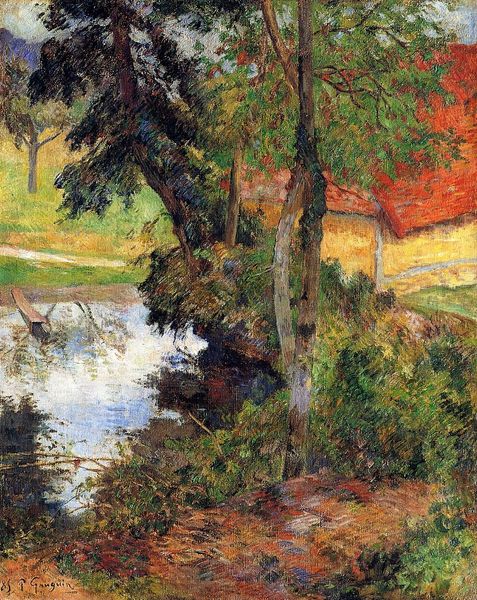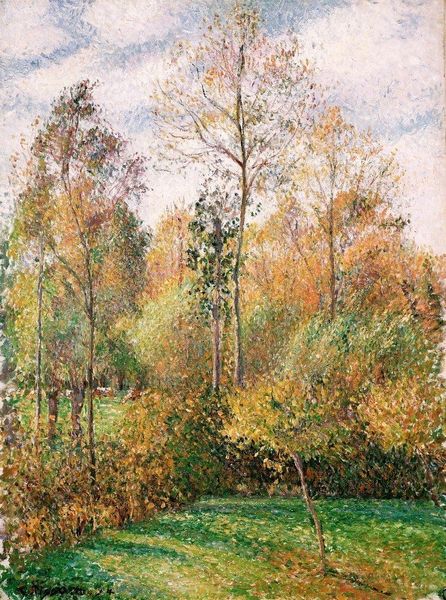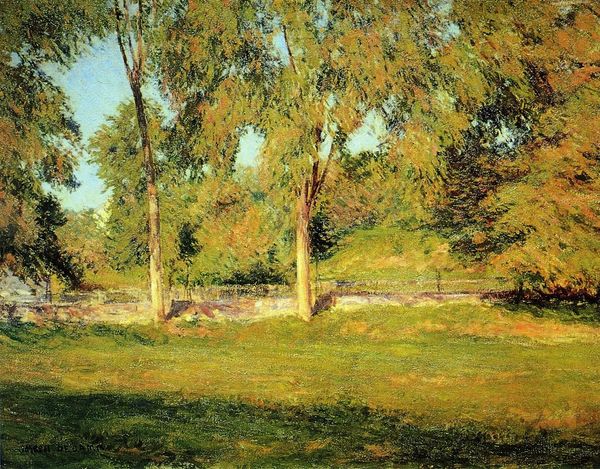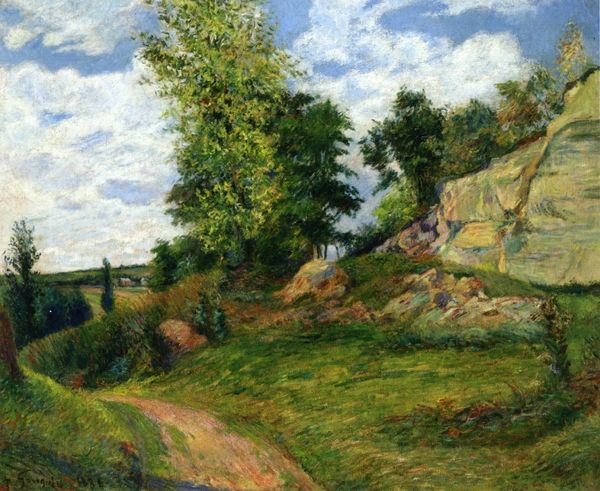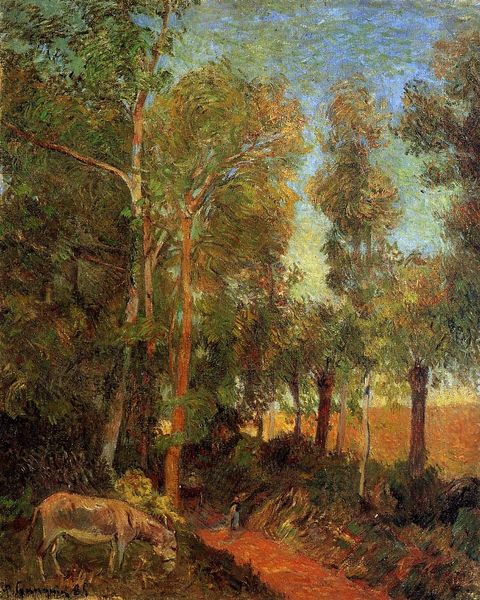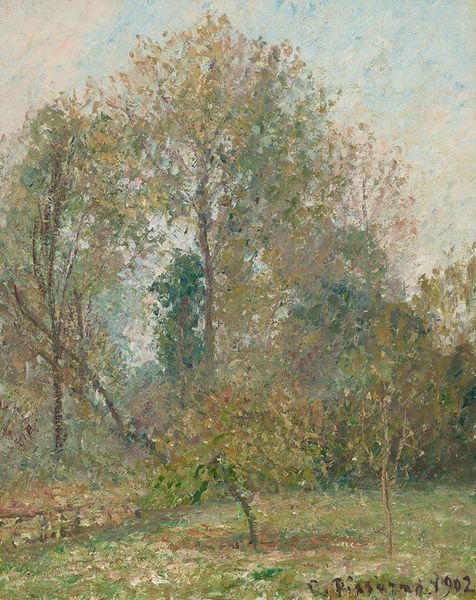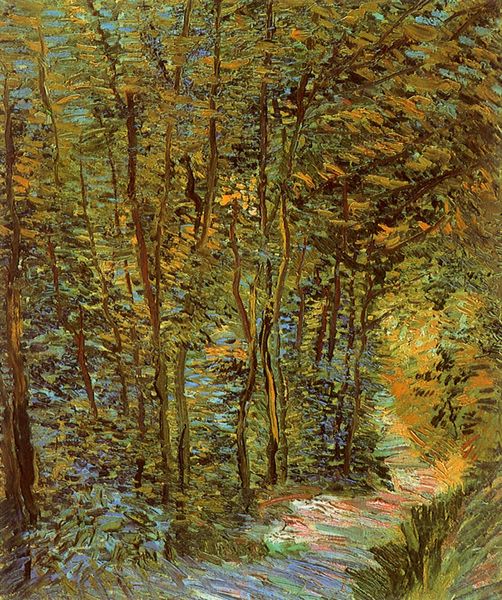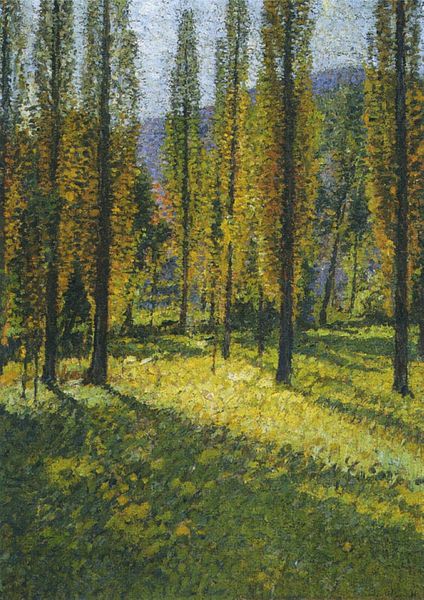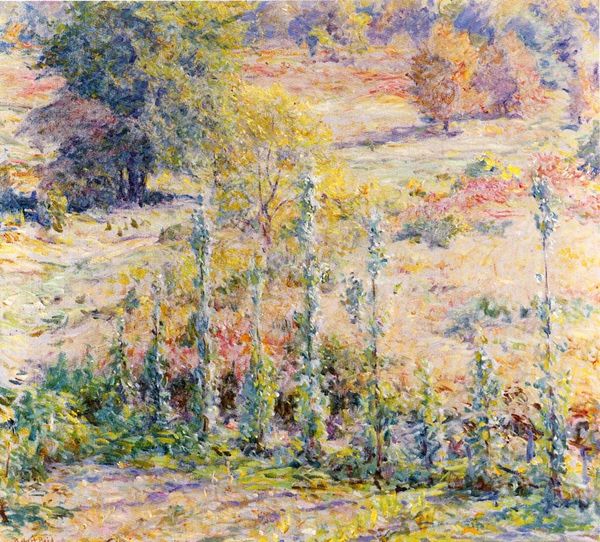
painting, plein-air, oil-paint
#
painting
#
impressionism
#
plein-air
#
oil-paint
#
landscape
#
post-impressionism
Copyright: Public domain
Editor: So, here we have Henri Martin’s “By the River,” painted in 1884. It’s an oil painting, fairly typical Impressionist landscape. What strikes me is how tranquil the scene feels, almost meditative. How do you interpret this work? Curator: That sense of tranquility, I think, arises from the symbolic language embedded in the landscape. Water, especially a gently flowing river, has long been associated with the passage of time and the continuity of life. Notice how the trees frame the scene; they stand as silent witnesses, perhaps guardians of this reflective space. Editor: That's interesting! I hadn't thought about the framing aspect. Is the way Martin uses light important here, too? Curator: Absolutely. The dappled light, fragmented and shimmering across the water and foliage, speaks to the transient nature of experience itself. The Impressionists were, after all, fascinated by capturing fleeting moments, and light was their primary tool. Look at the repetition of vertical forms reflected on the river as well. Editor: I see what you mean about the vertical forms! So, would you say the painting is less about a specific location and more about a universal experience? Curator: Precisely. The river transcends its physical form, becoming a vessel for broader reflections on existence. The use of small brushstrokes almost feels like a reconstruction, brick by brick. Editor: That's fascinating. I'll never look at an Impressionist landscape quite the same way again! Thank you! Curator: My pleasure. Consider how Martin uses these symbols and techniques to create a sense of emotional resonance that continues to move viewers today.
Comments
No comments
Be the first to comment and join the conversation on the ultimate creative platform.
